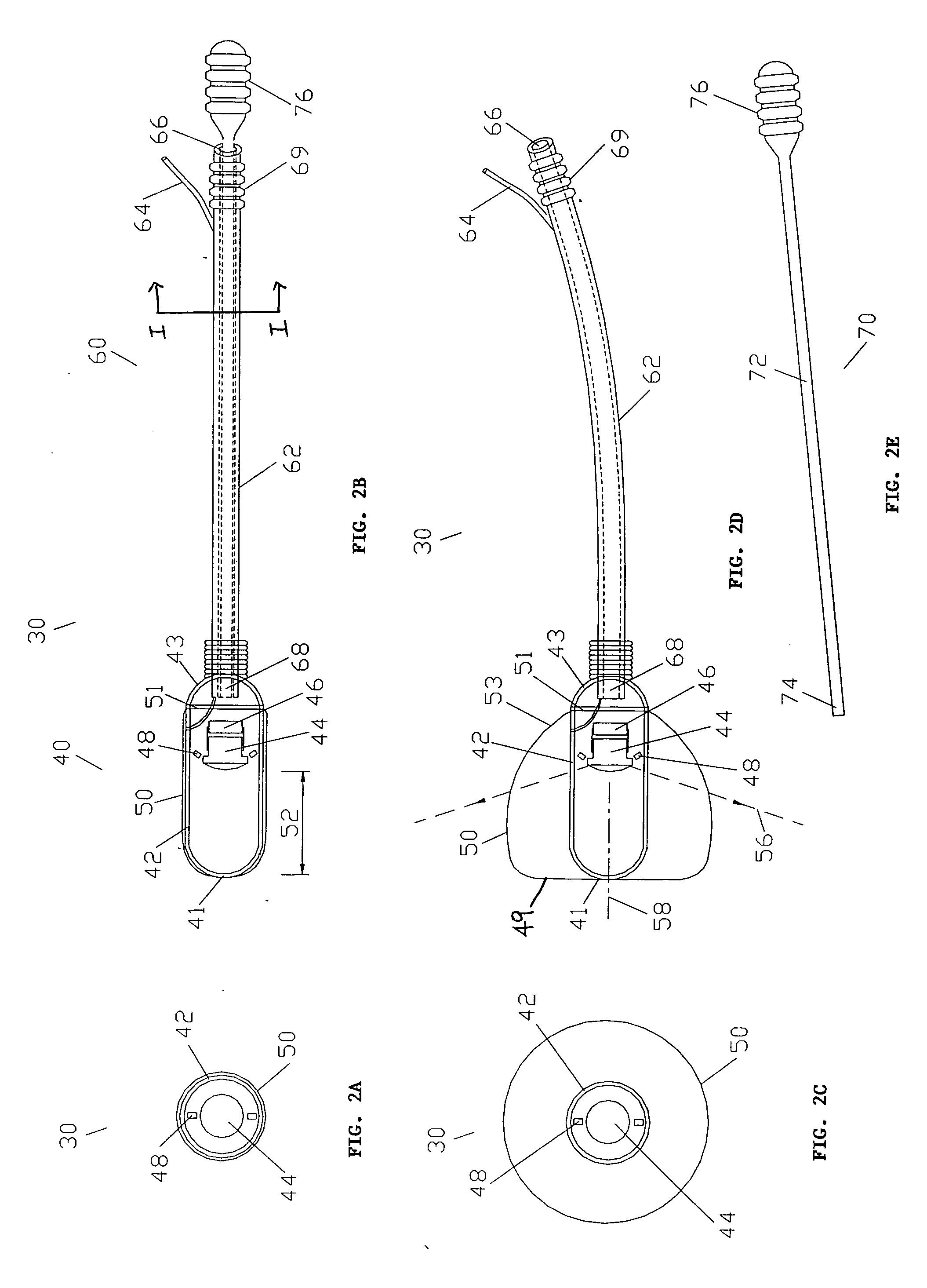Cervix monitoring system and related devices and methods
- Summary
- Abstract
- Description
- Claims
- Application Information
AI Technical Summary
Benefits of technology
Problems solved by technology
Method used
Image
Examples
Embodiment Construction
Referring to FIGS. 1 and 6, the present invention includes a system S for monitoring dilation of an opening 12 of a cervix 14 of a female patient 15 who is pregnant and in labor to deliver. The system includes a probe 30 that is inserted into a vagina 16 of the patient to gather data relating to the cervix, in particular, the diameter of the opening, and a monitoring unit 13 that is in communication with the probe and receives data from the probe which is processed by a processor to provide and display useful information to health care providers located proximately to the patient and / or remotely therefrom. Advantageously, the probe 30 is adapted to remain in the patient's vagina throughout the duration of labor and assume a suitable position in the vagina so as to gather image data that is sent to the monitoring unit. Accordingly, the patient need not have her cervix digitally probed during labor and may remain relatively undisturbed while changes in the size of the cervix opening ...
PUM
 Login to View More
Login to View More Abstract
Description
Claims
Application Information
 Login to View More
Login to View More - R&D
- Intellectual Property
- Life Sciences
- Materials
- Tech Scout
- Unparalleled Data Quality
- Higher Quality Content
- 60% Fewer Hallucinations
Browse by: Latest US Patents, China's latest patents, Technical Efficacy Thesaurus, Application Domain, Technology Topic, Popular Technical Reports.
© 2025 PatSnap. All rights reserved.Legal|Privacy policy|Modern Slavery Act Transparency Statement|Sitemap|About US| Contact US: help@patsnap.com



